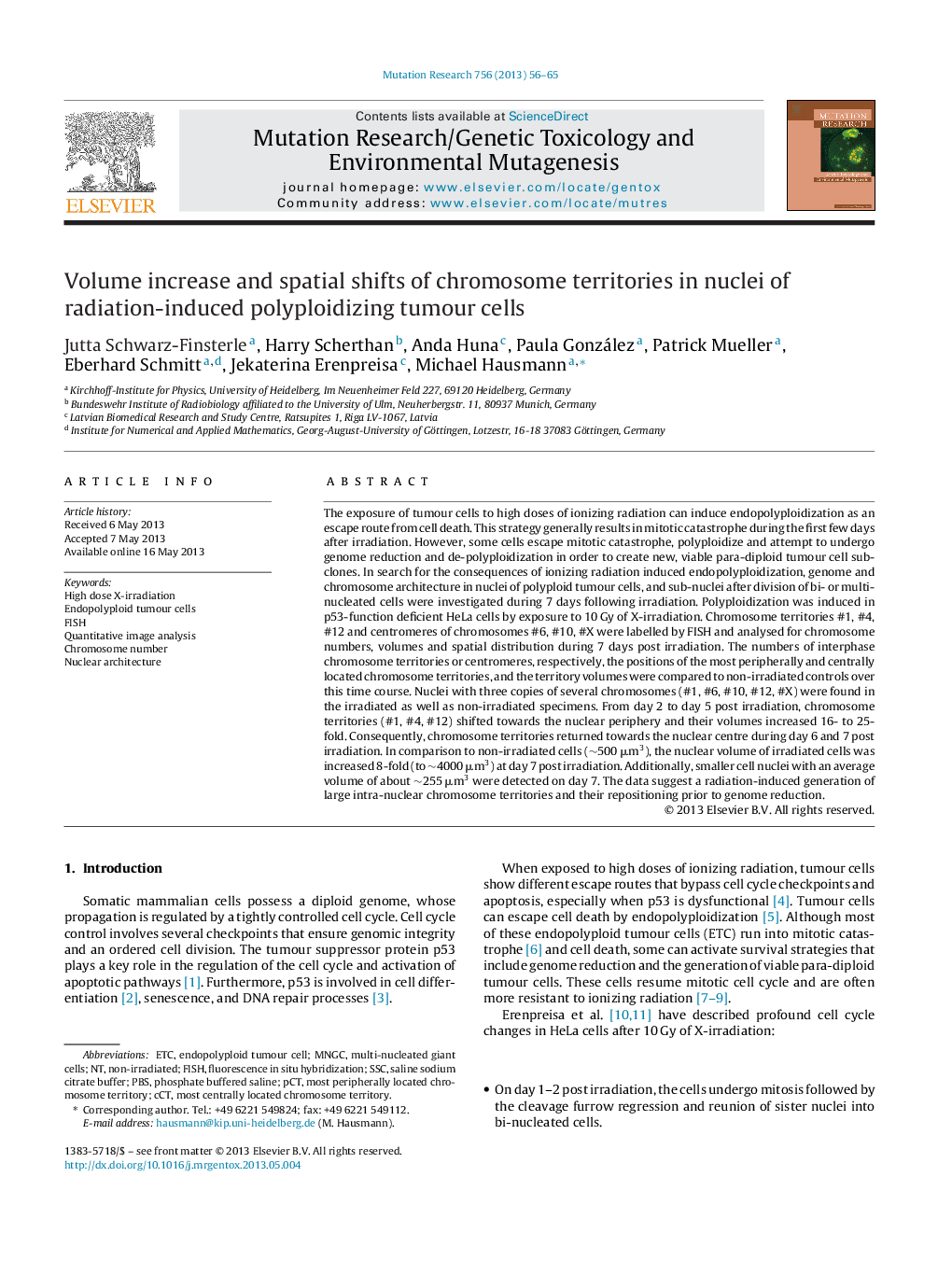| Article ID | Journal | Published Year | Pages | File Type |
|---|---|---|---|---|
| 8456501 | Mutation Research/Genetic Toxicology and Environmental Mutagenesis | 2013 | 10 Pages |
Abstract
The exposure of tumour cells to high doses of ionizing radiation can induce endopolyploidization as an escape route from cell death. This strategy generally results in mitotic catastrophe during the first few days after irradiation. However, some cells escape mitotic catastrophe, polyploidize and attempt to undergo genome reduction and de-polyploidization in order to create new, viable para-diploid tumour cell sub-clones. In search for the consequences of ionizing radiation induced endopolyploidization, genome and chromosome architecture in nuclei of polyploid tumour cells, and sub-nuclei after division of bi- or multi-nucleated cells were investigated during 7 days following irradiation. Polyploidization was induced in p53-function deficient HeLa cells by exposure to 10 Gy of X-irradiation. Chromosome territories #1, #4, #12 and centromeres of chromosomes #6, #10, #X were labelled by FISH and analysed for chromosome numbers, volumes and spatial distribution during 7 days post irradiation. The numbers of interphase chromosome territories or centromeres, respectively, the positions of the most peripherally and centrally located chromosome territories, and the territory volumes were compared to non-irradiated controls over this time course. Nuclei with three copies of several chromosomes (#1, #6, #10, #12, #X) were found in the irradiated as well as non-irradiated specimens. From day 2 to day 5 post irradiation, chromosome territories (#1, #4, #12) shifted towards the nuclear periphery and their volumes increased 16- to 25-fold. Consequently, chromosome territories returned towards the nuclear centre during day 6 and 7 post irradiation. In comparison to non-irradiated cells (â¼500 μm3), the nuclear volume of irradiated cells was increased 8-fold (to â¼4000 μm3) at day 7 post irradiation. Additionally, smaller cell nuclei with an average volume of about â¼255 μm3 were detected on day 7. The data suggest a radiation-induced generation of large intra-nuclear chromosome territories and their repositioning prior to genome reduction.
Keywords
Related Topics
Life Sciences
Biochemistry, Genetics and Molecular Biology
Cancer Research
Authors
Jutta Schwarz-Finsterle, Harry Scherthan, Anda Huna, Paula González, Patrick Mueller, Eberhard Schmitt, Jekaterina Erenpreisa, Michael Hausmann,
